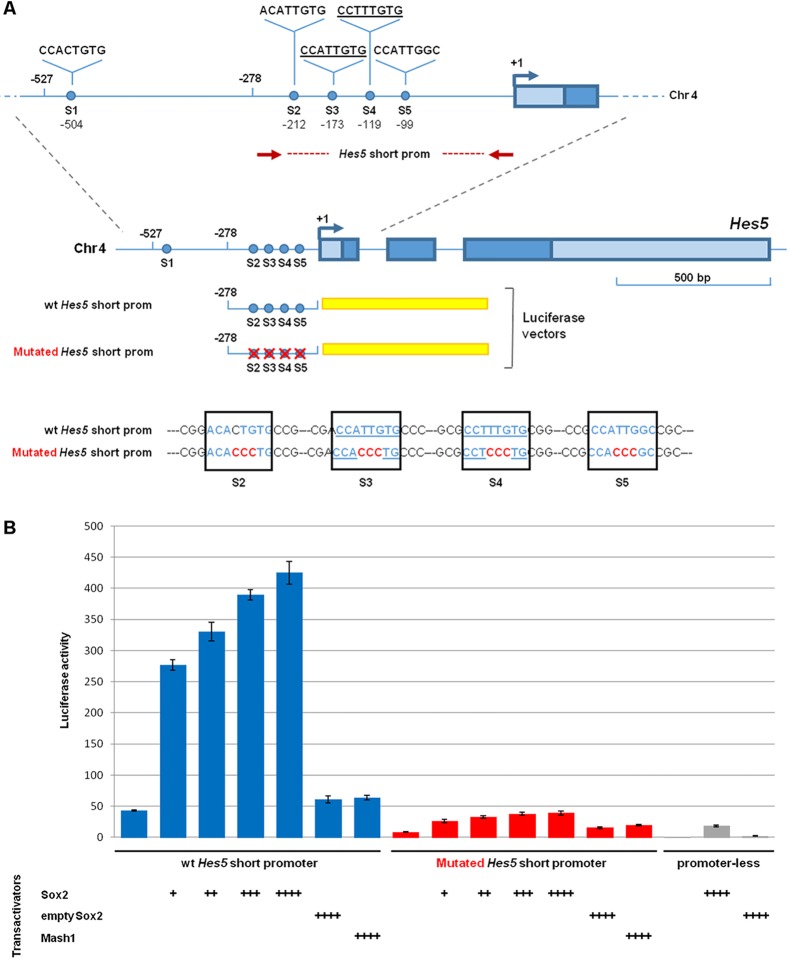Fig. 6.
Cis-regulatory activity of the Hes5 promoter is disrupted by mutations in predicted Sox2-binding sites. (A) The Hes5 promoter region. The red dotted line indicates the position of the short Hes5 promoter region cloned in a luciferase vector. Putative Sox2-binding sites (S1 to S5) are indicated by blue dots. The underlined sequences are the most confident Sox2 consensus motifs. A comparison of the S2- to S5-binding sites in the cloned wild-type and mutated Hes5 promoter fragment is shown at the bottom. (B) Promoter activation assay in Neuro2a cells transfected with a wild-type (wt; blue bars) or mutated (red bars) Hes5 short promoter cloned in a luciferase vector. Co-transfection of increasing amounts of Sox2-expressing vector, but not of a Mash1-expressing vector or a control empty vector, resulted in a dose-dependent increase in luciferase activity driven by the wild-type Hes5 promoter (blue bars), but not by the mutated Hes5 promoter (red bars). Sox2- or Mash1-expressing vectors did not induce luciferase activity in co-transfection with a promoter-less luciferase vector. The molar ratios compared with the luciferase vector (set at 1) were: +, 1:0.075; ++, 1:0.125; +++, 1:0.25; ++++, 1:0.5. Results are represented as fold-change increase in activity compared with the promoter-less luciferase vector without co-transfected Sox2, which is set at 1. Values are the mean of three independent transfection experiments carried out in triplicate. Error bars represent s.e.m.

